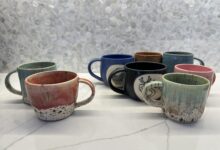What Color is Espresso Furniture

Espresso furniture is typically a dark brown color. It adds a touch of sophistication to any space.
With its deep hue and rich undertones, espresso furniture is a popular choice among homeowners and interior designers alike. Its versatile nature allows it to easily blend with a variety of color schemes and styles, making it a timeless and classic option for any room.
Whether you are looking to create a refined and elegant atmosphere or a cozy and inviting feel, espresso furniture can be the perfect choice to achieve your desired aesthetic. Its deep and warm color adds depth and character to your space, creating a sense of warmth and comfort.
What Is Espresso Furniture?
Espresso furniture is known for its rich, dark brown color, resembling the shade of brewed espresso. It adds elegance and sophistication to any space, making it a popular choice for both modern and traditional interiors.
What Color Is Espresso Furniture?
Espresso furniture has become increasingly popular due to its elegant and sophisticated appearance. But what exactly is espresso furniture and what sets it apart? In this section, we will explore the definition and characteristics of espresso furniture, as well as explain the color range associated with it.

Definition And Characteristics Of Espresso Furniture:
- Espresso furniture is known for its deep, rich brown color that resembles a strong cup of coffee. It is often described as a dark, almost black hue with warm undertones.
- This type of furniture is typically made from materials such as wood or wood veneers, giving it a sturdy and high-quality feel.
- Espresso furniture exudes a sense of luxury and elegance, making it a popular choice for both modern and traditional interior designs.
- It is often chosen for its ability to create a sleek and contemporary look in any space, adding depth and sophistication to the overall aesthetic.
Explanation Of The Color Range:
Espresso furniture is characterized by a range of shades that fall within the dark brown spectrum. While the primary color is a deep, almost black brown, variations can occur due to factors such as lighting conditions and materials used. Here are some common color variations and their descriptions:
- Dark chocolate brown: A rich and intense shade of brown with minimal undertones, perfect for creating a timeless and refined atmosphere.
- Mahogany brown: This variation features warm, reddish undertones that add depth and dimension to the furniture. It can lend a touch of traditional elegance to any room.
- Chestnut brown: A medium to dark brown shade with hints of red and golden undertones, creating a warm and inviting ambiance.
- Walnut brown: This variation showcases a blend of deep brown and black hues with subtle undertones of purple or gray, providing a contemporary and modern look.
Espresso furniture offers a diverse color range that complements various interior styles. Its deep brown tones can create an intimate and cozy atmosphere or add sophistication and refinement to a space. Whether used in bedrooms, living rooms, or dining areas, espresso furniture brings a touch of elegance that is sure to impress.
Different Shades Of Espresso Furniture
Espresso furniture comes in a range of shades, from dark brown to black, offering a versatile and sophisticated option for home decor. Embrace the elegance of espresso furniture with its rich, deep color and timeless appeal.
Espresso furniture is a popular choice for modern interiors due to its rich, dark color and versatile nature. This deep, luxurious hue adds warmth and sophistication to any space. However, did you know that there are different shades of espresso furniture available?
Let’s explore the main shades and the common variations within each shade.
Main Shades Of Espresso Furniture
Espresso furniture comes in a range of shades, each with its unique characteristics. Here are the main shades you’ll come across:
- Classic Espresso: This deep, almost black shade is the epitome of elegance. It adds a touch of drama and refinement to any room. Classic espresso furniture pairs well with neutral color schemes and serves as a timeless statement piece.
- Reddish Espresso: With hints of red undertones, this shade of espresso furniture brings warmth and vibrancy to a space. It creates a cozy atmosphere and complements earthy tones, such as beige or olive green.
- Cool Espresso: Cool espresso furniture leans towards the cooler end of the color spectrum, with subtle hints of gray. This shade is perfect for contemporary interiors and works well with a variety of color palettes, from bold and vibrant to soothing and neutral.
- Brown Espresso: A warmer alternative to the classic espresso, brown espresso furniture offers a softer, more inviting feel. This shade brings a sense of comfort and pairs effortlessly with earthy tones, natural textures, and rustic elements.
Common Variations Within Each Shade
Within each shade of espresso furniture, you’ll find variations that add depth and character to the pieces. Here are some common variations you might encounter:
- Antique Finish: Furniture with an antique finish features distressed details, such as dented edges or deliberate aging. This adds a touch of vintage charm and character to the piece.
- High Gloss: High gloss espresso furniture is coated with a reflective finish, giving it a sleek and modern appearance. This variation adds a contemporary touch to any space and enhances the richness of the espresso color.
- Matte Finish: Matte espresso furniture has a non-reflective surface, creating a more subdued and understated look. It’s perfect for those who prefer a softer, less flashy aesthetic.
- Wood Grain Texture: Some espresso furniture showcases the natural wood grain, adding texture and depth to the piece. This variation highlights the craftsmanship and organic beauty of the furniture.
- Flared or Tapered Legs: Another common variation is the style of legs on espresso furniture. Flared or tapered legs offer a modern twist, while straight legs maintain a classic look. This detail can significantly impact the overall style and feel of the piece.
Espresso furniture comes in various shades, allowing you to find the perfect match for your interior design preferences. Whether you prefer the classic, deep espresso or the warmth of reddish variations, each shade offers its unique appeal. Keep in mind the common variations within each shade, such as antique finishes or wood grain textures, to further enhance the visual interest of your furniture.
Choose the shade and variation that best align with your style and create a captivating atmosphere in your home.

Factors Affecting The Color Of Espresso Furniture
The color of espresso furniture is typically a rich, dark brown shade with hints of black. Various factors like wood type, stain or finish, and exposure to sunlight can affect the exact color of espresso furniture.
Espresso furniture has gained popularity for its rich, dark color that adds a touch of elegance and sophistication to any space. However, the actual color of espresso furniture may vary depending on several factors. In this section, we will explore the factors that can affect the color of espresso furniture, including the materials used in construction, finishing techniques and processes, and lighting and environment.
Materials Used In Construction
The materials used in constructing espresso furniture play a significant role in determining its color. Here are some key points to consider:
- Wood type: Different types of wood, such as oak, mahogany, or walnut, can be used to create espresso furniture. Each wood type has its distinct characteristics that influence the final color.
- Veneer or solid wood: Espresso furniture can be made from solid wood or feature a veneer on top of a lesser quality material. The choice of construction material can impact the color and overall appearance.
Finishing Techniques And Processes
The finishing techniques and processes applied to espresso furniture can greatly affect its color and appearance. Here are some factors to consider:
- Stain color: The choice of stain color used during the finishing process can significantly alter the final hue of espresso furniture. Different stains can create variations, ranging from darker browns to almost black.
- Sealants and topcoats: The application of sealants and topcoats not only protects the furniture but also enhances its color and sheen. The type and number of coats applied can impact the intensity and depth of the espresso color.
Lighting And Environment
Lighting and the surrounding environment can have a remarkable influence on the perception of color. Consider the following points:
- Natural light: The color of espresso furniture may appear different under various lighting conditions. Natural light can bring out the richness and warmth of its brown undertones.
- Artificial light: Different types of artificial lighting, such as warm or cool-toned bulbs, can make the espresso color appear slightly different. It’s essential to consider the type of lighting in the room where the furniture will be placed.
- Surrounding colors: The colors of the walls, flooring, and other furniture in the room can also affect how the espresso furniture’s color is perceived. Harmonizing the surrounding colors can create a cohesive and aesthetically pleasing space.
Considering these factors can help you understand the variations in color that may exist within espresso furniture. It’s important to remember that each piece is unique, and slight variations in color can add character and charm to your furniture ensemble.

Materials
Espresso furniture is typically deep brown in color, resembling the shade of dark roasted coffee beans. This rich hue adds warmth and elegance to any space, creating a timeless and sophisticated look.
What Color Is Espresso Furniture?
When it comes to espresso furniture, the color can vary depending on the materials used. In this section, we will explore the impact of wood types commonly used in espresso furniture and how they affect the color. Let’s dive in!
Types Of Wood Commonly Used In Espresso Furniture:
- Mahogany: This wood type is known for its rich, dark brown color with red undertones. When crafted into espresso furniture, it creates a warm and luxurious aesthetic. Mahogany is highly durable and often used in high-end furniture pieces.
- Oak: Oak wood is widely used in furniture manufacturing due to its strength and durability. When finished in an espresso color, oak furniture tends to have a medium to dark brown hue. The natural grain patterns of oak can add character and depth to the furniture piece.
- Walnut: Walnut wood boasts a natural dark brown color that is often enhanced in espresso furniture. The wood’s unique grain patterns create a visually interesting texture, making it a popular choice for modern and contemporary designs.
- Cherry: Cherry wood has a warm reddish-brown tone, and when stained in an espresso finish, it takes on a deep, lustrous brown color. The smooth finish and natural beauty of cherry wood make it a sought-after material for espresso furniture.
Impact Of Wood Type On Color:
- Darker woods like mahogany and walnut tend to result in a deeper espresso color, emphasizing the richness and depth of the furniture piece.
- Lighter woods such as oak and cherry, when finished in espresso, can create a slightly lighter shade of brown, still maintaining the essence of the espresso color.
- Grain patterns in the wood can influence the appearance of the furniture. Bold and pronounced grain patterns, like those found in oak, often add visual interest to the piece, while smoother and more consistent grain patterns, like those in cherry wood, create a sleek and elegant look.
The color of espresso furniture can vary depending on the type of wood used. Mahogany and walnut produce a deeper and richer espresso color, while oak and cherry can result in a slightly lighter shade. Additionally, the unique grain patterns in the wood can add character and visual appeal to the furniture piece.
So, when choosing espresso furniture, consider not only the color but also the type of wood that best suits your desired aesthetic.
Finishing Techniques
Espresso furniture is typically a rich, dark brown color that resembles the strong black coffee it’s named after. The finish is smooth and glossy, enhancing the beauty of the wood grain for a sophisticated look in any space.
Staining Methods For Espresso Furniture:
When it comes to achieving the rich and elegant look of espresso furniture, staining is one of the most commonly used finishing techniques. There are a few different methods that can be employed to stain furniture and achieve that dark, coffee-colored finish.
Let’s take a closer look at some of these staining methods:
- Spray staining: This method involves using a spray gun to evenly distribute the stain on the surface of the furniture. It allows for full coverage and creates a smooth finish.
- Brush staining: This technique involves manually applying the stain onto the furniture using a brush. It gives a more textured and slightly rustic appearance, making it ideal for furniture with a distressed look.
- Wipe-on staining: As the name suggests, this method involves applying the stain by wiping it onto the furniture using a clean cloth. It allows for more control over the color intensity and ensures that every nook and cranny is adequately covered.
Effects On Color And Appearance:
The choice of finishing technique can greatly impact the color and appearance of espresso furniture. Here are some effects to consider:
- Depth and richness: Staining techniques enhance the natural beauty of wood by adding depth and richness to the color. This is especially true for espresso furniture, as the dark stain brings out the unique grain patterns and creates a luxurious look.
- Uniformity: Depending on the staining method used, the color can be uniformly applied all over the furniture or varied to achieve a more natural appearance. Brush staining, for example, can create a slightly uneven finish for a more authentic and weathered look.
- Sheen: The type of stain used can also impact the sheen or glossiness of the furniture. Some stains have a satin finish, which adds a subtle shine, while others may have a matte finish for a more understated appeal.
Choosing the right staining method for espresso furniture is essential to achieve the desired color and appearance. Whether you opt for spray staining, brush staining, or wipe-on staining, each technique offers its own unique effects on the final outcome. Consider the depth, uniformity, and sheen you desire to create a beautiful and stylish piece of espresso furniture that adds elegance to any space.
Lighting And Environment
Espresso furniture reflects a rich and dark brown color, providing a warm and elegant touch to any space. Its hue can vary depending on lighting and environmental factors, making it versatile and adaptable to different interior styles.
How Lighting Can Affect The Perceived Color Of Espresso Furniture:
- Different lighting conditions can significantly impact the way espresso furniture appears in your space. Understanding how lighting affects the perceived color can help you choose the right furniture for your home. Here are some key points to consider:
- Natural lighting: When espresso furniture is placed in a room with ample natural light, it tends to showcase its rich brown tones. The warmth of the sunlight enhances the depth of the espresso color, creating an inviting and cozy atmosphere.
- Artificial lighting: On the other hand, artificial lighting can alter the way espresso furniture looks. Depending on factors like the type of bulb and its color temperature, the furniture may appear darker or lighter. Cooler lighting with blue undertones might make the espresso color seem more intense, while warmer lighting may soften its hue.
- Direction of light: The direction from which the light hits your furniture can also make a difference. When light falls directly on espresso furniture, it may appear brighter and highlight its wood grain, adding texture and visual interest. However, shadows cast by oblique or overhead lighting can create contrast and reveal different undertones in the espresso color.
- Light source placement: The placement of light sources in relation to the furniture can affect how it appears. Carefully positioning lamps or track lighting to evenly illuminate the entire piece can help avoid uneven color variations and ensure an accurate representation of the espresso shade.
Tips For Choosing The Right Lighting For Your Furniture:
- Selecting the appropriate lighting for your espresso furniture is crucial to achieving the desired ambiance and showcasing its true color. Here are some useful tips to help you choose the right lighting:
- Consider the room’s purpose: Assess the room’s function to determine the type of lighting required. If the espresso furniture is in a living room where relaxation and comfort are important, softer and warmer lighting options would be ideal. For office spaces or areas requiring task-oriented focus, brighter lighting with cooler color temperatures would be more suitable.
- Experiment with different bulbs: LED, fluorescent, and incandescent bulbs each emit different hues and color temperatures. Try out various bulbs to identify which type gives your espresso furniture the most accurate and appealing color representation. Be aware that LED bulbs tend to emit cooler tones, while incandescent bulbs produce warmer, yellowish light.
- Consider dimmers and lighting controls: Installing dimmers or utilizing lighting control systems allows you to adjust the brightness and color temperature to match the surrounding environment. This flexibility ensures that your espresso furniture is always shown in the best possible light, no matter the time of day or occasion.
- Seek professional advice: Consulting with lighting professionals can provide valuable insights and recommendations tailored to your specific space and furniture. They can help you select the most appropriate lighting fixtures, bulbs, and placement to enhance the color and overall appearance of your espresso furniture.
- Test in different lighting conditions: Before committing to a particular lighting setup, test it in different lighting conditions throughout the day to see how your espresso furniture looks under various scenarios. This way, you can ensure it maintains its desired appearance in all lighting situations.
Remember that lighting plays a significant role in how the color of espresso furniture is perceived. By understanding the impact of lighting and using these tips, you can create a harmonious environment that showcases the beauty of your espresso furniture in all its glory.

Matching Espresso Furniture With Other Colors
Espresso furniture is a rich, dark brown color that adds sophistication to any space. It pairs well with neutral colors like white, cream, and beige for a timeless look, or you can create a bold contrast by combining it with vibrant colors such as red or blue.
The versatility of espresso furniture makes it a great choice for a variety of interior design styles.
Combining Espresso Furniture With Different Color Schemes
Espresso furniture is known for its rich, dark brown color and sleek appearance. It adds a touch of elegance and sophistication to any space. Whether you have existing espresso furniture or you’re planning to incorporate it into your home or office, it’s essential to know how to match it with other colors to create a cohesive and balanced look.
Here are some tips to help you make the most out of your espresso furniture:
Tips For Creating A Cohesive And Balanced Look
- Neutral color scheme: Pairing espresso furniture with neutral colors is a foolproof way to achieve a timeless and versatile look. Consider using shades of white, cream, beige, or gray as a backdrop to let the espresso furniture take center stage. These neutral tones create a sophisticated and understated atmosphere.
- Contrasting hues: If you’re looking to make a bold statement, consider pairing espresso furniture with bold, contrasting hues. Colors like teal, navy blue, or even a vibrant yellow can provide an eye-catching contrast against the dark brown. This combination adds energy and excitement to the space.
- Earthy tones: Embrace the warmth of nature by incorporating earthy tones into your color scheme. Colors such as olive green, terracotta, or rust complement espresso furniture beautifully, creating a cozy and inviting ambiance.
- Monochromatic scheme: For a sleek and modern look, opt for a monochromatic color scheme. Stick to different shades of brown, including espresso, chocolate, and caramel. This creates a harmonious and sophisticated aesthetic, with the varying tones adding depth and dimension to the space.
- Metallic accents: Add a touch of glamour to your espresso furniture by incorporating metallic accents. Colors like gold, silver, or copper can enhance the richness of the dark brown while bringing a touch of luxury to the overall design.
- Pop of color: If you prefer a more eclectic and vibrant look, consider adding a pop of color to your space. Choose a bold hue that complements the espresso furniture, such as a deep red, vibrant orange, or royal blue. This adds personality and visual interest to the room.
Remember, achieving a balanced and cohesive look with espresso furniture is all about finding the right color combinations that suit your personal style and the overall mood you want to create. Experiment with different color schemes, textures, and patterns to create a space that truly reflects your taste and personality.
Complementary Colors
Espresso furniture is characterized by a deep, rich brown color. It pairs well with complementary colors like teal, cream, and gold, creating a sophisticated and elegant look in any space.
Colors That Work Well With Espresso Furniture:
Espresso furniture is a popular choice for its rich and elegant look. As you start decorating your space with espresso furniture, it’s important to choose complementary colors that bring out its beauty and enhance the overall ambiance. Here are some color options to consider:
- Warm neutrals: Shades like cream, ivory, beige, and tan create a cozy and inviting feel when paired with espresso furniture. These colors provide a balanced contrast and help to showcase the deep tones of the espresso.
- Earthy tones: Colors inspired by nature, such as olive green, mossy brown, and rusty red, can add depth and warmth to the space. These earthy tones complement the dark espresso shades, creating a harmonious and natural vibe.
- Metallic accents: Incorporating metallic accents like gold, brass, or silver can elevate the sophistication of the space. These shiny finishes create a luxe feel and add a touch of glamour to the espresso furniture.
- Cool blues and grays: Shades of blue and gray, such as navy, slate, or light blue, create a calming atmosphere when combined with espresso furniture. These cool tones provide a modern and serene look, enhancing the overall aesthetic.
- Vibrant jewel tones: If you want to make a bold statement, consider incorporating jewel tones like emerald green, sapphire blue, or amethyst purple. These rich and deep hues create a striking contrast with the dark espresso, adding drama and opulence to the space.
- Soft pastels: For a more delicate and airy vibe, soft pastel shades like blush pink, mint green, or baby blue can be paired with espresso furniture. These colors lend a gentle touch and create a light-hearted ambience.
Remember, the key is to choose colors that complement rather than overpower the espresso furniture. By considering these color options, you can create a well-coordinated and visually pleasing space that showcases the beauty of your espresso furniture.

Contrasting Colors
Espresso furniture features a dark brown hue with rich undertones, adding warmth and sophistication to any space. The contrasting colors it pairs well with include crisp whites, creamy neutrals, and vibrant pops of color, creating a stylish and visually appealing aesthetic.
Colors That Create A Striking Contrast With Espresso Furniture
When it comes to choosing colors that create a striking contrast with espresso furniture, there are several options to consider. These contrasting colors can enhance the visual appeal of your space and make your espresso furniture stand out. Whether you prefer bold and vibrant shades or subtle and neutral tones, here are some techniques for creating visual interest:
- Crisp White: A classic choice, white provides a clean and fresh contrast to the deep brown tones of espresso furniture. The brightness of white can create a striking visual balance and give the room a modern and sophisticated look.
- Light Gray: With its neutral and versatile nature, light gray pairs well with espresso furniture. The cool undertones of gray complement the warmth of the espresso, offering a contemporary feel while maintaining a soothing ambiance.
- Teal: For a pop of color, teal is an excellent choice to contrast with espresso furniture. The rich and vibrant hue creates a striking visual impact, adding a sense of energy and personality to your space.
- Yellow: When paired with espresso furniture, yellow can create a cheerful and vibrant contrast. Choose shades that range from soft and subtle to bold and bright to suit your personal preference and the ambiance you want to create.
- Navy Blue: If you’re looking for a sophisticated and dramatic contrast, navy blue is an ideal choice. The deep blue tone adds depth and richness to the room, creating an elegant and timeless look when combined with espresso furniture.
- Emerald Green: Another bold option, emerald green creates a luxurious and eye-catching contrast against espresso furniture. This vibrant color can add a touch of glamour and make a statement in your space.
- Muted Pastels: Soft, muted pastel colors like blush pink, lavender, or mint green can provide a subtle and delicate contrast to espresso furniture. These pale hues create a gentle harmony and infuse a sense of tranquility into the room.
Contrasting colors can truly transform the look and feel of a space when combined with espresso furniture. Whether you prefer bold and vibrant shades or subtle and neutral tones, these color combinations will help you create a striking visual impact that adds personality and style to your living area.
Neutral Colors
Espresso furniture is characterized by its deep, rich brown color, similar to the beverage it is named after. This neutral hue adds warmth and sophistication to any space, making it a versatile choice for interior design.
Using Neutral Colors To Complement Espresso Furniture
When it comes to designing a space with espresso furniture, choosing the right colors can make all the difference. Neutral colors are a popular choice as they provide a timeless and elegant look that complements the rich tones of espresso furniture.
Here are some ideas and examples for incorporating neutral colors into your design scheme:
- Beige: Beige is a versatile neutral color that pairs well with espresso furniture. Its warm undertones create a cozy and inviting atmosphere.
- Gray: Gray is another excellent choice for creating a sophisticated and modern look. Whether it’s a light or dark shade, gray enhances the deep brown hues of espresso furniture.
- White: White is a classic neutral color that adds a touch of brightness and freshness to any space. It creates a clean and crisp contrast against the dark tones of espresso furniture.
- Cream: Cream is a softer alternative to white, offering warmth and comfort in a room. It creates a serene ambiance when paired with espresso furniture.
- Taupe: Taupe is a versatile neutral that blends well with espresso furniture. Its earthy undertones create a sense of calm and balance in the space.
- Navy: While not typically considered a neutral color, navy can work exceptionally well with espresso furniture. Its deep and rich tones create a striking contrast that adds depth to the overall design.
By incorporating these neutral colors into your design scheme, you can create a timeless look that complements the richness of espresso furniture. Whether you choose beige, gray, white, cream, taupe, or even navy, these colors will enhance the beauty and elegance of your space.
So go ahead and experiment with these neutral hues to create a harmonious and stylish ambiance in your home.
Maintaining And Caring For Espresso Furniture
Espresso furniture is typically a deep, rich brown color with undertones of black. To maintain and care for espresso furniture, regular dusting and gentle cleaning with a soft cloth and mild soap is recommended. Avoid using harsh chemicals or abrasive materials to prevent damage to the finish.
Cleaning And Maintenance Tips:
Espresso furniture, known for its rich dark brown color, adds a touch of elegance to any room. To keep your espresso furniture looking its best, regular cleaning and maintenance is essential. Here are some tips to help you maintain and care for your espresso furniture:
- Dusting: Regularly remove dust and debris from your espresso furniture using a soft, lint-free cloth or a feather duster. This helps prevent scratches and keeps the surface looking clean.
- Cleaning products: Use a gentle cleanser specifically made for wood furniture to clean your espresso pieces. Avoid harsh chemicals or abrasive cleaners, as they can damage the finish.
- Spills and stains: Clean up spills immediately to prevent them from seeping into the wood and causing permanent damage. Use a soft cloth dampened with water and mild soap to gently remove stains.
- Avoid direct sunlight: Keep your espresso furniture away from direct sunlight, as prolonged exposure can cause the color to fade. If possible, use curtains or blinds to protect the furniture from UV rays.
- Regular polishing: Periodically, apply a furniture polish suitable for espresso furniture to maintain its shine and protect the finish. Follow the instructions on the polish and use a soft cloth to apply it in circular motions.
- Avoid excess moisture: Moisture can cause the wood to warp or swell, so be cautious when cleaning. Use a slightly damp cloth for cleaning purposes, but make sure to wipe away any excess moisture with a dry cloth afterward.
- Scratches and dents: To minimize the appearance of scratches or dents on your espresso furniture, apply a touch-up pen or polish that matches the color of the wood. Follow the manufacturer’s instructions carefully for best results.
- Prevention is key: To protect your espresso furniture from scratches and dents, use coasters for drinks, placemats for dining, and pads or felt protectors for heavy objects.
- Regular inspection: Periodically inspect your espresso furniture for any signs of damage or wear. Address any issues promptly to prevent further damage and maintain the integrity of the furniture.
By following these cleaning and maintenance tips, you can ensure that your espresso furniture stays in great condition for years to come, allowing you to enjoy its beauty and functionality in your home.
Frequently Asked Questions On What Color Is Espresso Furniture
What Color Is Espresso Furniture?
Espresso furniture typically has a dark brown color that resembles the rich tones of brewed espresso. It is a popular choice that adds a touch of elegance and sophistication to any space. The dark hue of espresso furniture also makes it easy to coordinate with other colors in your home decor.
Conclusion
Understanding the color of espresso furniture can greatly impact your interior design choices and create a cohesive and stylish look in your home. Espresso furniture is a deep, rich brown color with undertones of black. Its versatility allows it to blend seamlessly with a variety of design styles, from modern to traditional.
The dark hue adds depth and warmth to any space, while its neutrality makes it a timeless and classic choice. When choosing complementary colors, consider lighter shades to create contrast and balance. Experiment with different color palette options to find the perfect combination that showcases your furniture and reflects your personal style.
Whether you’re furnishing a living room, bedroom, or office, espresso furniture offers elegance and sophistication that will elevate your space. Embrace the beauty of espresso furniture and watch your home’s style come to life.










